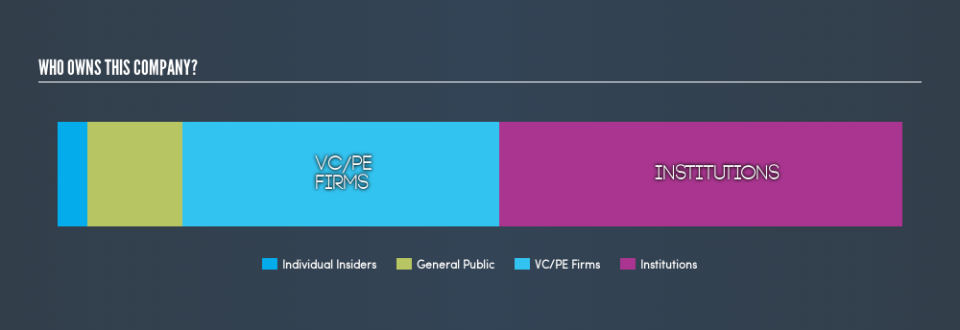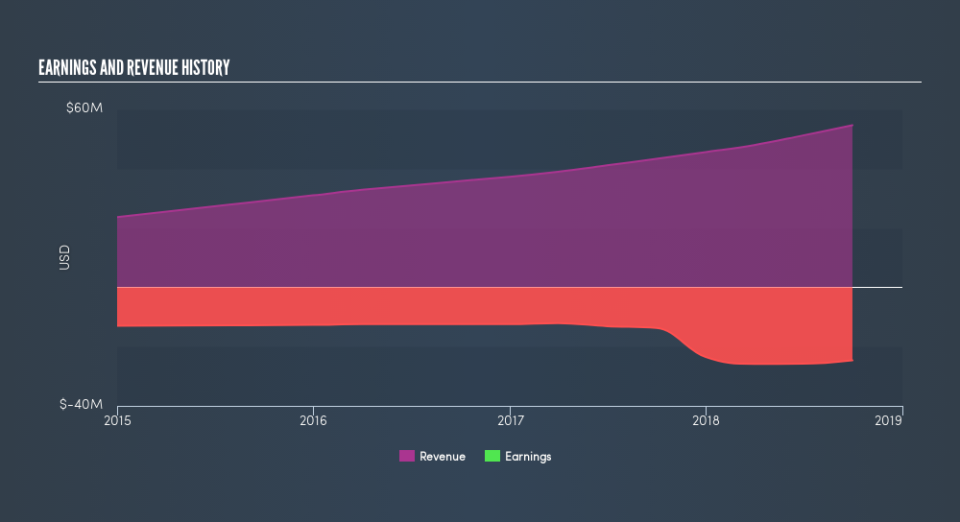How Many OrthoPediatrics Corp. (NASDAQ:KIDS) Shares Do Institutions Own?

Want to participate in a short research study? Help shape the future of investing tools and receive a $20 prize!
A look at the shareholders of OrthoPediatrics Corp. (NASDAQ:KIDS) can tell us which group is most powerful. Insiders often own a large chunk of younger, smaller, companies while huge companies tend to have institutions as shareholders. Companies that used to be publicly owned tend to have lower insider ownership.
OrthoPediatrics is a smaller company with a market capitalization of US$545m, so it may still be flying under the radar of many institutional investors. Taking a look at our data on the ownership groups (below), it’s seems that institutional investors have bought into the company. We can zoom in on the different ownership groups, to learn more about KIDS.
Check out our latest analysis for OrthoPediatrics
What Does The Institutional Ownership Tell Us About OrthoPediatrics?
Many institutions measure their performance against an index that approximates the local market. So they usually pay more attention to companies that are included in major indices.
OrthoPediatrics already has institutions on the share registry. Indeed, they own 48% of the company. This suggests some credibility amongst professional investors. But we can’t rely on that fact alone, since institutions make bad investments sometimes, just like everyone does. If multiple institutions change their view on a stock at the same time, you could see the share price drop fast. It’s therefore worth looking at OrthoPediatrics’s earnings history, below. Of course, the future is what really matters.
We note that hedge funds don’t have a meaningful investment in OrthoPediatrics. Quite a few analysts cover the stock, so you could look into forecast growth quite easily.
Insider Ownership Of OrthoPediatrics
The definition of an insider can differ slightly between different countries, but members of the board of directors always count. Company management run the business, but the CEO will answer to the board, even if he or she is a member of it.
Insider ownership is positive when it signals leadership are thinking like the true owners of the company. However, high insider ownership can also give immense power to a small group within the company. This can be negative in some circumstances.
We can see that insiders own shares in OrthoPediatrics Corp.. In their own names, insiders own US$20m worth of stock in the US$545m company. It is good to see some investment by insiders, but it might be worth checking if those insiders have been buying.
General Public Ownership
The general public, with a 11% stake in the company, will not easily be ignored. While this group can’t necessarily call the shots, it can certainly have a real influence on how the company is run.
Private Equity Ownership
With an ownership of 38%, private equity firms are in a position to play a role in shaping corporate strategy with a focus on value creation. Sometimes we see private equity stick around for the long term, but generally speaking they have a shorter investment horizon and — as the name suggests — don’t invest in public companies much. After some time they may look to sell and redeploy capital elsewhere.
Next Steps:
It’s always worth thinking about the different groups who own shares in a company. But to understand OrthoPediatrics better, we need to consider many other factors.
I like to dive deeper into how a company has performed in the past. You can find historic revenue and earnings in this detailed graph.
Ultimately the future is most important. You can access this free report on analyst forecasts for the company.
NB: Figures in this article are calculated using data from the last twelve months, which refer to the 12-month period ending on the last date of the month the financial statement is dated. This may not be consistent with full year annual report figures.
We aim to bring you long-term focused research analysis driven by fundamental data. Note that our analysis may not factor in the latest price-sensitive company announcements or qualitative material.
If you spot an error that warrants correction, please contact the editor at editorial-team@simplywallst.com. This article by Simply Wall St is general in nature. It does not constitute a recommendation to buy or sell any stock, and does not take account of your objectives, or your financial situation. Simply Wall St has no position in the stocks mentioned. Thank you for reading.

 Yahoo Finance
Yahoo Finance 

